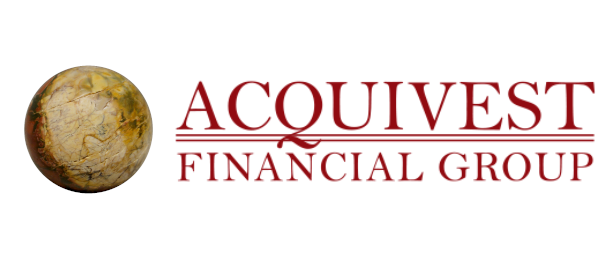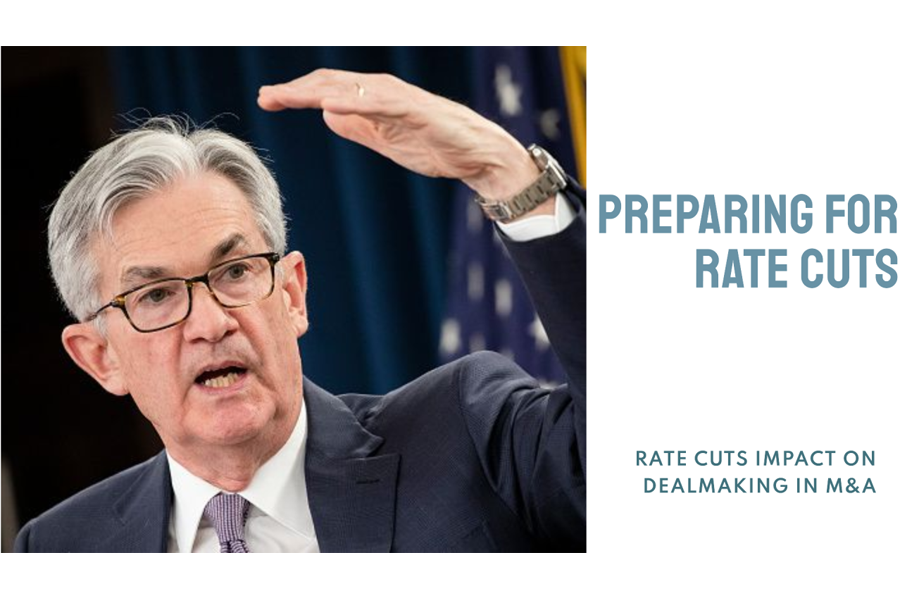Garren Work, MBA
VP, Mergers & Acquisitions Advisor for Businesses <$100MM
Click here to view original article
Jerome Powell has indicated that “the time has come” for rate cuts in September. After a year of maintaining rates at the highest level in over two decades, officials finally have enough confidence to shift their stance by cutting rates at the upcoming September meeting. Analysts’ predictions have been all over the place, expecting anywhere between 1 to 3 rate cuts of 25 to 50 basis points this year.
The consensus for September is a 25-point cut. Morningstar’s chief economist points out "If you're a market bull right now, you don't want 50 basis points. You want a slow walk down the monetary-policy stairs.” The Fed, which is committed to achieving a soft landing, cited strong employment numbers as reason to hold strong at the current rate. However, a correction on employment data by the Biden administration revealed the White House overstated jobs numbers by 818,000; an error that likely is influencing the Fed’s decision to cut rates in September. While a 50-point cut would provide additional relief, a larger cut may signal the Fed sees concern with the economy and potentially trigger an overreaction.
Interest rates have a significant impact on M&A. Cost of financing can impact valuation and overall market dynamics.
Cost of Financing
Higher/Rising Interest Rates: When interest rates rise, the cost of borrowing increases, making it more difficult for potential buyers to secure favorable terms. Nearly all business transactions in the lower-middle-market (LMM) rely on loans for funding. As borrowing becomes more expensive, fewer buyers tend to enter the market, while buyers exploring the market take additional precautions and careful consideration. Cash buyers, without lending requirements, may have an advantage.
Lower/Falling Interest Rates: Conversely, lower interest rates reduce borrowing costs, which can stimulate buyer interest with cheaper debt. Buyers can stretch their purchasing power further in a transaction with more debt. As more buyers enter the marketplace, it should increase competition for available businesses and lower cost of debt tends to lead to higher risk tolerance.
Valuation
Pressuring Cashflows: In business valuations, interest rates influence future cashflows in two ways. Higher cost of financing creates higher debt-service payments, which pressure future cash flows of the business. Higher interest rates also lead to higher discount rates, which lower a company’s valuation. Discount rates in financial models typically use the Fed Bond Rates as the Risk-Free rates, so when the Fed rate is higher it reduces the present value of future cashflows. Higher rates create pressure on expected future cash flows and higher discounts to their present value, applying pressure for lower valuations from both sides.
Lending Limits: Buyers in the LMM must consider lending limits in their approach to a valuation. If a buyer can secure lending at acceptable terms, they should proceed with the transaction. Over the past year, however, lending limits have increasingly added constraints. Pepperdine’s Private Capital Markets Report in 2024 reported 56% of respondents indicate Company Value exceeds lending limits, up significantly from 2022 which reported 40%.
Example: Let’s say buyer Bill is looking at acquiring a Value-add Distributor, earning $1M EBITDA, with an asking price of $5M. Bill reviews comparable transactions and determines a 5x EBITDA multiple is appropriate. Happy to pay fair-market, Bill presents an offer for the asking price of $5M, and quickly accepted by the Seller. Bill is expecting to obtain an SBA loan and starts seeking banks to support his acquisition.
At current rates, an SBA loan analysis might look like this:
- Loan Amount: $5M (after loan closing costs)
- Down payment: 10% or $500k
- Interest: 11% (Prime + 2.5%; current prime rate is 8.5%)
- Required DSCR: 1.25x
- Debt Service: $826k annual payments x 1.25 DSCR = $1.03M, exceeding the $1M EBITDA
Since the DSCR exceeds the available cashflow, this loan would not be approved as-is or be considered a strong candidate for loan approval. It’ll require some flexibility – either the from the bank easing requirements, Bill may need to come up with more cash down, or Seller giving in on price. Dealmakers may need to be creative to get this deal done.
Should interest rates drop by 100 basis points, the same SBA loan might look like this:
- Loan Amount: $5M (after loan closing costs)
- Down payment: 10% or $500k
- Interest: 10% (Prime + 2.5%; hypothetical prime rate of 7.5%)
- Required DSCR: 1.25x
- Debt Service: $793k annual payments x 1.25 DSCR = $991k, less than the $1M EBITDA
This deal would be considered a strong candidate for loan approval. No further negotiation is expected.
Dealmaker’s Behavior
Buyer's Perspective: Higher interest rates may cause buyers to be more conservative, especially if their cash is in a high-yield savings account paying over 5% interest. Buyers with a strong mandate may still pursue the market cautiously, seeking stable cash flows and long-term growth. However, being more risk-averse they might also be tougher in negotiations, sensitive to price or seek terms to offset the higher cost of borrowing. If buyers expect an upcoming rate drop upcoming, they may choose to wait for that cut. We see this in private equity markets, with S&P Global reporting a record $2.6T in dry powder - cash waiting to be deployed. It’s hard to blame a buyer for wanting to wait if they are expecting to save significant money in interest payments over the life of a loan - $337k in the example above.
Conversely, in a low-interest rate environment, more buyers may enter the market. With alternatives not as attractive, M&A strategy tends to be more appealing. Buyers are expected to accept higher risks, focusing more on opportunity and upside.
Seller's Perspective: In a high-interest-rate environment, sellers may need to be more flexible on pricing or offer creative seller financing to close deals. They might also face a longer sales cycle due to reduced buyer demand, longer lending times, and more involved due diligence periods.
Sellers might choose to delay selling in a high-interest-rate environment, hoping for rates to drop and valuations to improve. Especially if they feel the side-effects such as a drop in their business performance. Lower rates typically are expected to correlate with a stimulating effect in the economy, so business performance is expected to show improvement moving after a cut.
Summary
Rising interest rates often correlate with a slowdown in transaction volume as both buyers and sellers become more cautious, as the market experienced from 2022 to 2023. Expectations of lower rates may cause a temporary dip in activity, a sentiment observed over the past 9 months. Lowering rates, however, should lead to a more active market, with more businesses transacting quicker.
A 25-basis point drop may not be enough to immediately open the floodgates, but if further cuts are expected, it should build momentum. For Dealmakers contemplating a transaction, especially those waiting for a drop, this could be the signal to start exploring opportunities.

